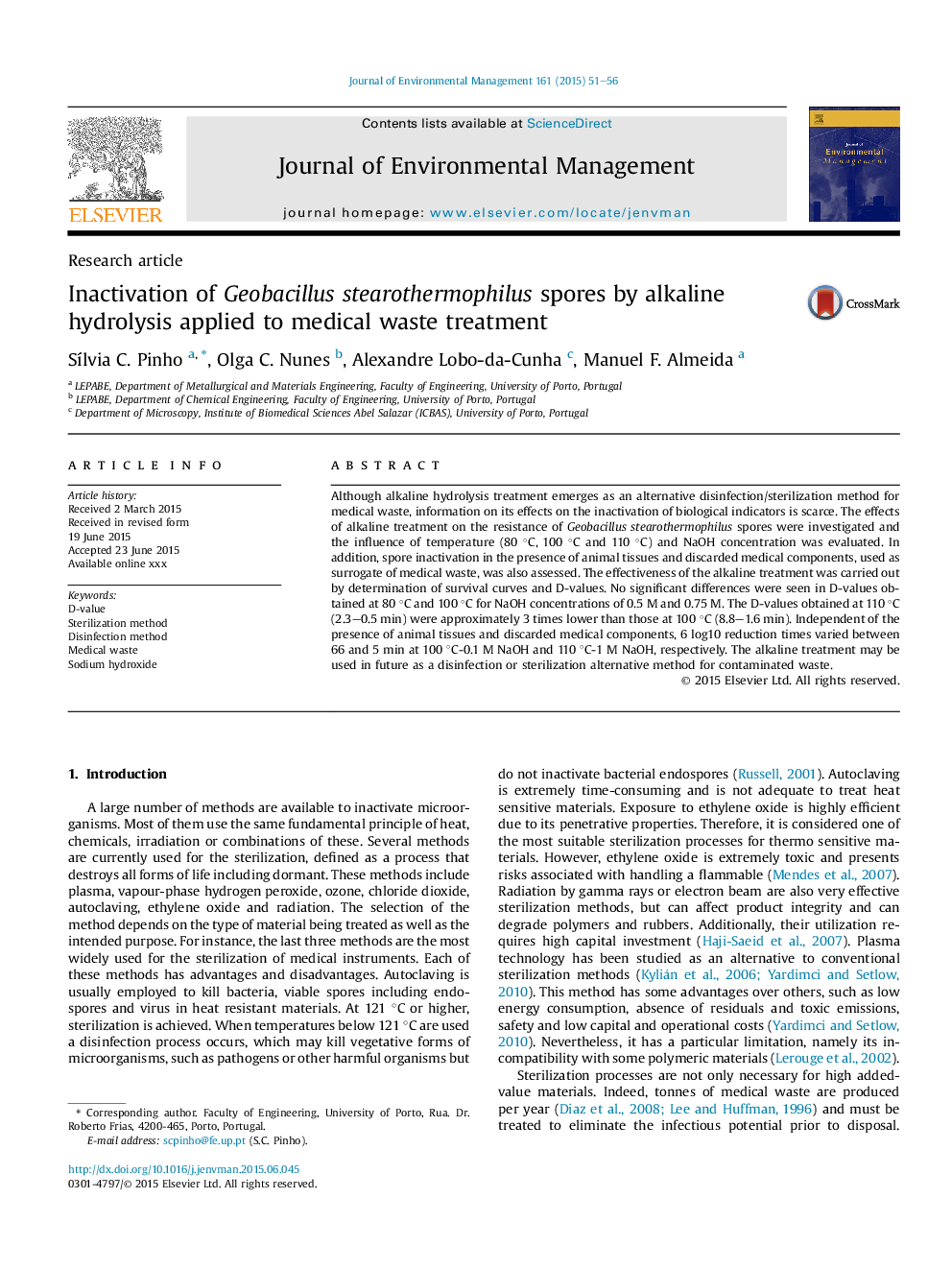| Article ID | Journal | Published Year | Pages | File Type |
|---|---|---|---|---|
| 7481515 | Journal of Environmental Management | 2015 | 6 Pages |
Abstract
Although alkaline hydrolysis treatment emerges as an alternative disinfection/sterilization method for medical waste, information on its effects on the inactivation of biological indicators is scarce. The effects of alkaline treatment on the resistance of Geobacillus stearothermophilus spores were investigated and the influence of temperature (80 °C, 100 °C and 110 °C) and NaOH concentration was evaluated. In addition, spore inactivation in the presence of animal tissues and discarded medical components, used as surrogate of medical waste, was also assessed. The effectiveness of the alkaline treatment was carried out by determination of survival curves and D-values. No significant differences were seen in D-values obtained at 80 °C and 100 °C for NaOH concentrations of 0.5 M and 0.75 M. The D-values obtained at 110 °C (2.3-0.5 min) were approximately 3 times lower than those at 100 °C (8.8-1.6 min). Independent of the presence of animal tissues and discarded medical components, 6 log10 reduction times varied between 66 and 5 min at 100 °C-0.1 M NaOH and 110 °C-1 M NaOH, respectively. The alkaline treatment may be used in future as a disinfection or sterilization alternative method for contaminated waste.
Related Topics
Physical Sciences and Engineering
Energy
Renewable Energy, Sustainability and the Environment
Authors
SÃlvia C. Pinho, Olga C. Nunes, Alexandre Lobo-da-Cunha, Manuel F. Almeida,
